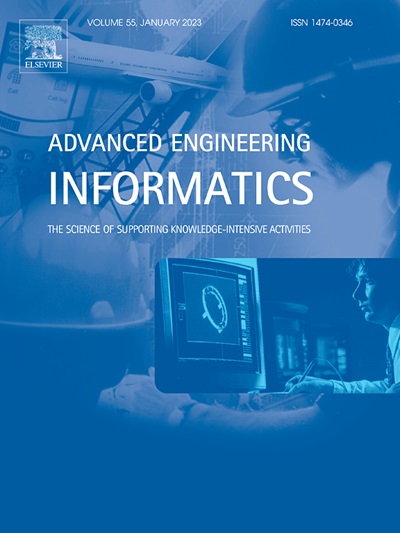The grinding wheel wear condition monitoring method based on multi-sensor information hierarchical fusion for high-speed cylindrical grinding
IF 8
1区 工程技术
Q1 COMPUTER SCIENCE, ARTIFICIAL INTELLIGENCE
引用次数: 0
Abstract
In high-speed cylindrical grinding, the grinding wheel is prone to wear, resulting in increased grinding force and vibration, which causes grinding burn, chatter, and a decline in workpiece surface quality. Thus, determining the grinding wheel status to carry out dressing is vital. Therefore, a multi-sensor information hierarchical fusion method is proposed for grinding wheel wear state monitoring. Firstly, the information curve grinding wheel wear is constructed by surface roughness, power signal, wear plane area rate, and material removal amount to reveal the grinding wheel wear law. Then, the wear states are quantified by the wear plane area rate. Then, multi-domain feature extraction, optimization, and dimensionality reduction are performed on the sensing signals (Acoustic Emission and Vibration) to realize multi-sensor information data-level fusion. Finally, a BPNN-D/S model is established to realize multi-sensor information features and decision-level fusion based on Back Propagation Neural Network (BPNN) and Dempster-Shafer Evidence Theory (D/S). In the bearing outer ring cylindrical grinding experiment, the credibility of identification is more than 93 %, according to this proposed method for high-speed grinding wheel wear.
基于多传感器信息分层融合的高速外圆磨削砂轮磨损状态监测方法
高速外圆磨削时,砂轮容易磨损,造成磨削力增大和振动,从而引起磨削烧蚀、颤振,工件表面质量下降。因此,确定砂轮状态进行修整是至关重要的。为此,提出了一种多传感器信息分层融合的砂轮磨损状态监测方法。首先,通过表面粗糙度、功率信号、磨损面面积率和材料去除率构建砂轮磨损信息曲线,揭示砂轮磨损规律;然后,用磨损面面积率量化磨损状态。然后对传感信号(声发射和振动)进行多域特征提取、优化和降维,实现多传感器信息数据级融合;最后,基于反向传播神经网络(BPNN)和Dempster-Shafer证据理论(D/S),建立了BPNN-D/S模型,实现了多传感器信息特征和决策级融合。在轴承外圈外圆磨削实验中,根据所提出的方法对高速砂轮磨损进行识别的可信度达93%以上。
本文章由计算机程序翻译,如有差异,请以英文原文为准。
求助全文
约1分钟内获得全文
求助全文
来源期刊

Advanced Engineering Informatics
工程技术-工程:综合
CiteScore
12.40
自引率
18.20%
发文量
292
审稿时长
45 days
期刊介绍:
Advanced Engineering Informatics is an international Journal that solicits research papers with an emphasis on 'knowledge' and 'engineering applications'. The Journal seeks original papers that report progress in applying methods of engineering informatics. These papers should have engineering relevance and help provide a scientific base for more reliable, spontaneous, and creative engineering decision-making. Additionally, papers should demonstrate the science of supporting knowledge-intensive engineering tasks and validate the generality, power, and scalability of new methods through rigorous evaluation, preferably both qualitatively and quantitatively. Abstracting and indexing for Advanced Engineering Informatics include Science Citation Index Expanded, Scopus and INSPEC.
 求助内容:
求助内容: 应助结果提醒方式:
应助结果提醒方式:


